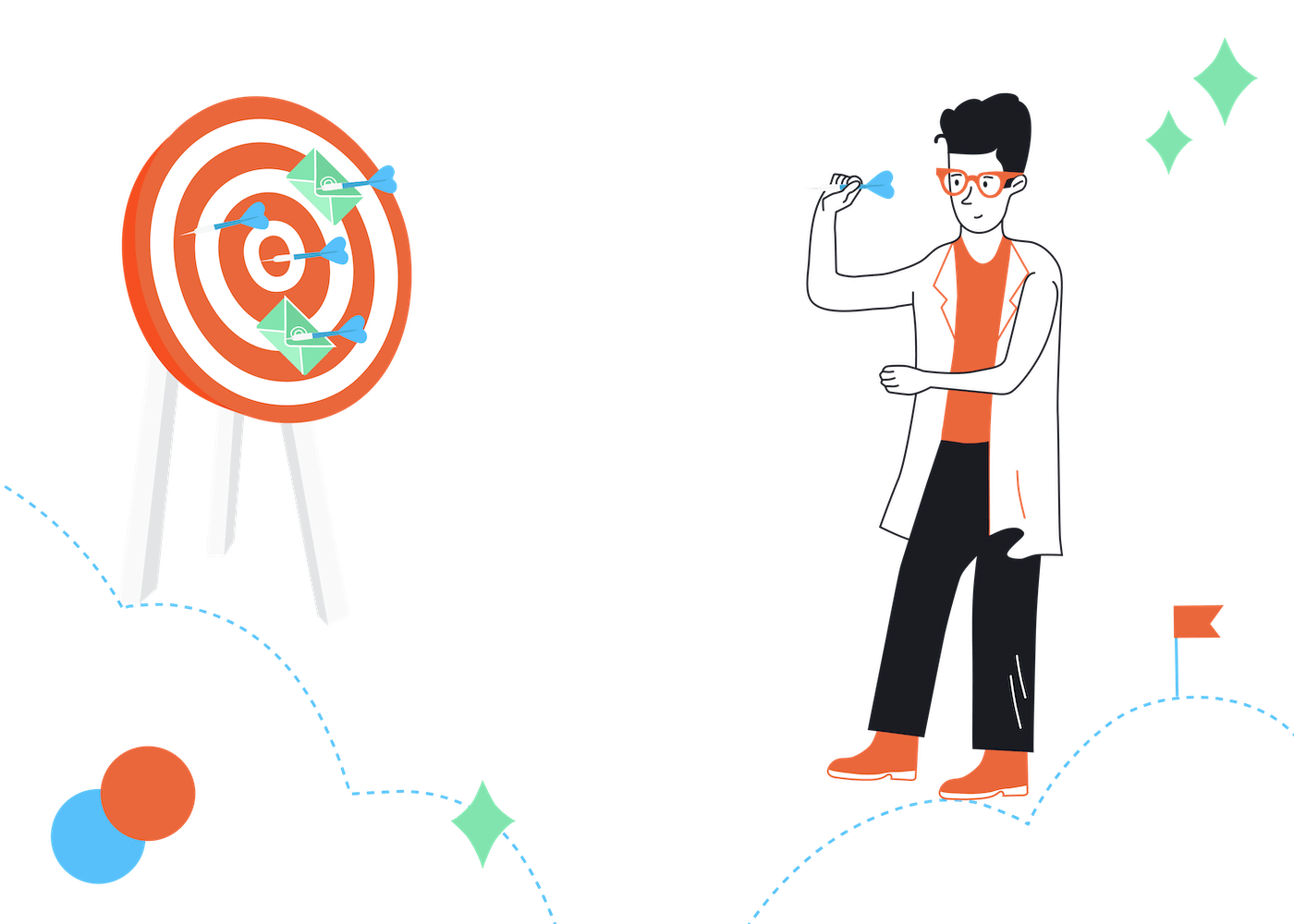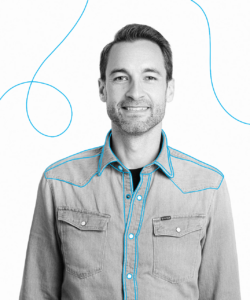In my 6 years of working for an email marketing agency, I made all kinds of mistakes. Most were small ones that only my grammar-loving boss would notice.
However, I also managed to send a newsletter to the wrong mailing list once or twice.
Another time, I produced about two thousand bounced messages because I uploaded a list where none of the email addresses contained an @ symbol. I'm still wondering why the email marketing platform even allowed me to upload this list.
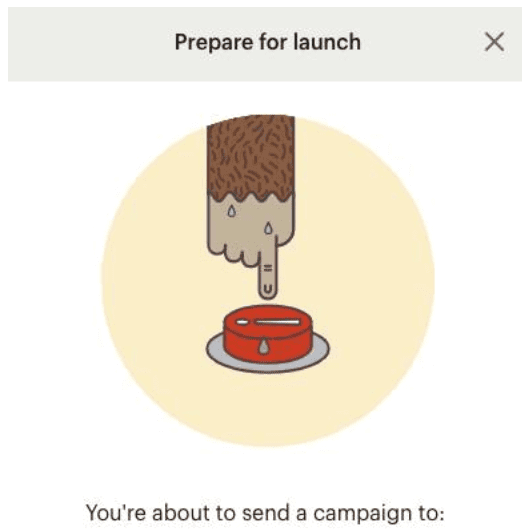
Mailchimp's screen before sending an email campaign
As human as mistakes are, they should be avoided as much as possible. Some of these mistakes might seem minor, but they can still have a significant impact on the success of your email marketing campaign. Poor subject lines, irrelevant content, and poor segmentation are just a few common email marketing mistakes that can lead to poor performance, lower engagement rates, and decreased ROI.
In this article, I will explore some of the most common email marketing mistakes based on my experience and provide tips on how to avoid them.
The Email Marketing Mistakes You Want to Avoid
Avoiding the following mistakes will give you better open and click-through rates and will avoid you losing subscribers because they’ve become fed up with your emails and have unsubscribed.
So without further delay, here are our top mistakes to avoid:
1. Automations running wild
Automations can be a blessing and a curse. Here's a personal tale that really drove that home for me. We recently switched our list over to our new email marketing service (Brevo).
The catch with Brevo is that it automatically adds new contacts into any connected automation workflow as soon as they're added to a list.
So, what happened next? People who had signed up for our free ebook months or even years before ended up getting a welcome email again.

The email I sent by mistake
Less than ideal as you can imagine. Not exactly what I had in mind.
So no matter which platform you're using, it's crucial to get a grip on how its automations work. Sometimes, hitting pause on your automations is all it takes to avoid sending out emails that don't make sense.
By the way, you can sign-up now to get our free ebook too. I promise I won't welcome you twice.
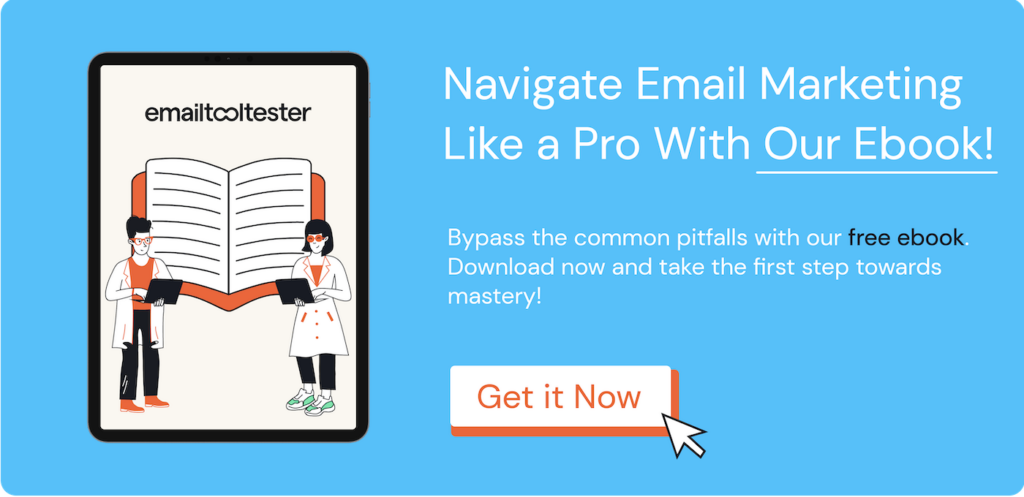
And still on that note, here's another example:
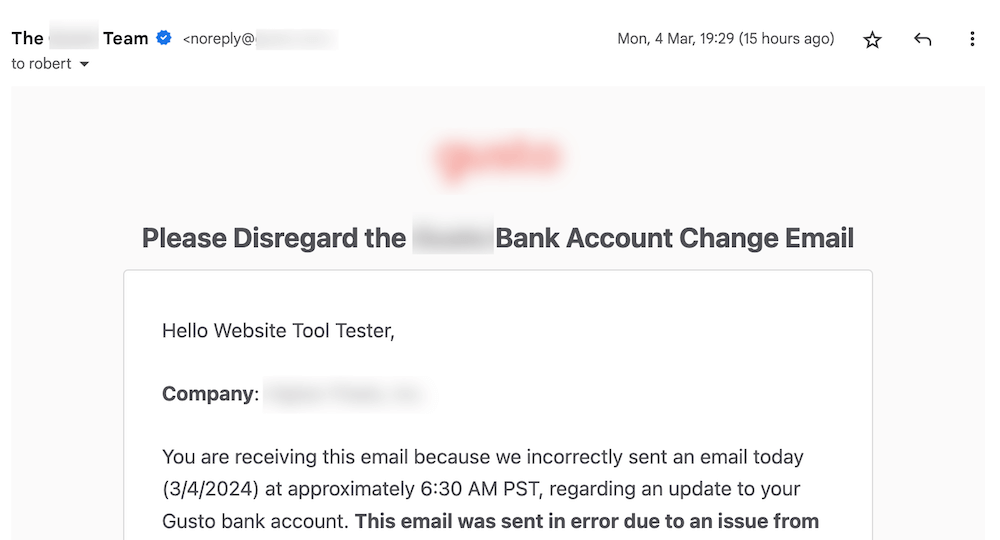
Automatic email mistake – even worse as it's related to our bank account
2. Not seeing things from the point of view of the recipient
There is nothing worse than writing a marketing email with the sole aim of overwhelming the recipients with marketing messages. This is the biggest sin of all and, trust us, it won’t get you very far.
These are two typical mistakes:
- Talking about yourself too much: It's okay to send company updates now and again, but we wouldn't recommend this as your only newsletter content. What readers are looking for is helpful material that adds value, for example, blog posts, guides or ebooks.
- Sending newsletters that are too long and rambling: Keep it short and sweet. You’re competing for your subscribers’ time, so don’t make them regret opening your message.
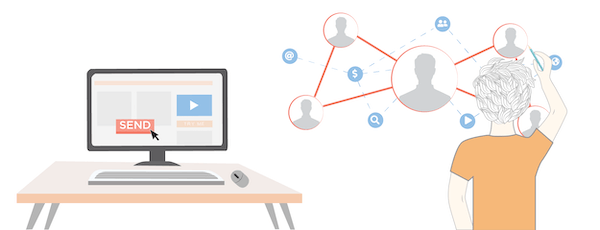
3. Sending out too many emails
Email frequency is something to be aware of.
Your customers don’t care that you agreed to send the newsletter out twice a month at the marketing meeting. If you don’t have anything interesting to say, please don’t just hassle your customers for the sake of it.
Have you ever received several emails from the same business in the same day? This will often come about if you have automated emails set up and are still sending newsletters out manually on top of that. Make sure to keep this in mind when working on your newsletter calendar.
4. Sending newsletters to recipients without their consent
This is a risky move as far as your company’s reputation is concerned – nobody likes a spammer, after all. But it can also be rather costly if you get a cease and desist letter. And even though the CAN-SPAM Act may not be all that tough on spammers, you should stop and think about your own reaction when you receive a newsletter from a company you’ve never heard of.
We’re guessing that you’re not exactly jumping for joy when that happens? We thought as much… We recommend focusing all your attention on permission marketing. This means building email lists, rather than buying them, and only emailing contacts that have given you permission to do so (i.e. through double opt-in).
We’d recommend you check out the current law in your country regarding email marketing.
5. Not using a business email address
Using your own domain name when sending out email marketing campaigns such as newsletters is crucial for several reasons.
Firstly, it establishes credibility and legitimacy for the sender, which helps build trust with the recipient. Much more so than a @gmail.com or @outlook.com email address ever could.
Secondly, it improves email deliverability by using a reputable domain name, reducing the risk of emails being marked as spam.
Thirdly, it reinforces brand identity and makes it easier for recipients to recognize and remember the organization.
Overall, using a business email address is essential for any organization that wants to establish a professional image, increase the chances of email deliverability, maintain brand consistency, and protect sensitive information.
6. Errors in your email authentication
If you haven't set up SPF and DKIM authentication yet, you'll have a hard time delivering your newsletters into your recipients' inboxes. These protocols define the email servers are allowed to send emails in your name.
But that's not all. Gmail and Yahoo now require DMARC authentication as well. To find out whether you are passing all these requirements, and if not, how to set them up, please consult our authentication guide.
7. Sending newsletters containing errors
Sending out incorrect pricing information is obviously far from ideal. Other unpopular errors include:
- Personalized elements that have not been updated (e.g., “Dear John Doe”)
- Broken links
- Incorrect links
- Forms that can be filled in but don’t send
- Typos
- Images that don’t load or are blurry
Make sure you always get someone else to check your newsletter before you send it. If that isn’t possible, it is a good idea to sleep on it and read over it again yourself in the morning with fresh eyes. We’d also recommend that you always send a test email to yourself before going ahead and sending it to your subscriber list.
Here’s an example of a newsletter that includes pretty much every error you can think of:
And remember, AI tools like ChatGPT can be a great (free) companion for proofreading.
8. Sending emails with errors in the subject line
The subject line will often determine whether the recipient will open the email in the first place. These are some mistakes you should avoid:
- Including the key message too late
- Writing a subject line that is too long
- Giving the text too much of a promotional focus – it’s almost always better to keep it factual and to the point
- Including special characters that aren’t displayed properly (watch out for €, ™, ©, and so on)
- Going crazy with emojis
- Not including a subject line at all
- Using all caps and lots of !!!???? – No one likes to be shouted at!
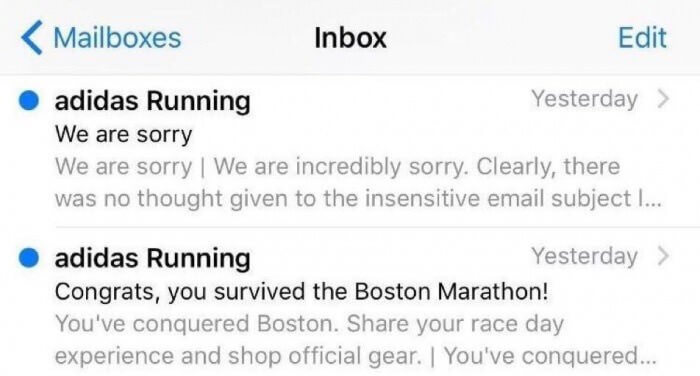
Not the best subject line either (found on X)
The best way to work out the optimum length for your subject lines is to run tests on various email clients (and don’t forget that a lot of people will read email newsletters on their smartphone).
You can also test our handy Subject Line Tester.
9. Sending HTML newsletters that are not being displayed properly
Unfortunately, one of the main issues faced within email marketing is still newsletters that are completely messed up when displayed. Email clients (like Outlook) that ignore standards are so popular that you sadly cannot just forget about them. But there is a solution to this problem in the form of decent newsletter tools that include the relevant testing mechanisms, and tons of great HTML templates.
Nowadays, it is also extremely important that newsletters look good on mobile devices too. Think “responsive web design”. You can use a template for this that is designed for smartphones, tablets, and desktop computers alike (we even have a list of over 1,000+ free templates that do the job).
Embedded videos are hardly ever a sensible choice. You’d be better off including a screenshot or animated GIF with a link to the website/streaming platform where the video can be found.
10. Sending newsletters containing too many images
Occasionally, a newsletter will land in our inbox that is literally just made up of images. And if people don’t download those images, they won’t ever get the message at the heart of the email.
That’s why it’s crucial that you make sure you have a good balance of text and images. If not, your email might even just end up in the junk folder because spam filters won’t be able to cope with it.

11. Sending newsletters at the wrong time of the day or week
There has been a lot of discussion in the past about the best time to send out marketing emails. In our experience:
- Newsletters should never be sent out in the middle of the night. This is because they will end up having to compete with all the other new emails that have come in by the next morning. One top tip is to find a newsletter tool that comes with smart sending functions that work in line with the recipient’s specific time zone.
- If you’re working in the B2B sector, it’s not necessarily a good idea to send your newsletters out on Fridays. After all, emails received on a Friday that aren’t opened on the same day already fall under “last week’s emails” when Monday comes around.
12. Not segmenting your contacts
Segmentation is necessary in order to not only organize your contacts, but to ensure that they receive targeted content that’s relevant to them. You can use demographics such as geolocation and age to segment your lists, or go deeper by segmenting according to purchasing habits.
For example, say you run an ecommerce, and you want to let customers know about some promotions you’re running. Segmenting customers by the type of product they usually buy means you can send them the discounts that are relevant to them. These kinds of personalized messages result in a higher click-through rate and more conversions (in this case, sales).
13. Failing to include clear calls to action
A call-to-action is a piece of content intended to induce a viewer, reader, or listener to perform a specific act, e.g. buy now or click here. If your newsletters don’t include one, then you’re missing a trick.
Every newsletter should include one clear call-to-action. Make it easy for the reader and use a button. What you want to avoid is including tons of links, which will only overwhelm your recipients and could impact your deliverability rates.
14. Not sending a welcome email
Not sending a welcome email can be a significant mistake in email marketing, as it misses a valuable opportunity to engage with subscribers, establish a positive first impression, and provide them with essential information.
Welcome emails have been shown to have higher open and engagement rates than other types of emails (up to 86%), and they can be used to offer valuable details about the brand, products, services, or promotions.
By neglecting to send a welcome email, brands risk losing out on potential opportunities to build relationships with their subscribers, increase their engagement, and foster long-term customer loyalty.
15. Not monitoring your analytics
A big email marketing mistake made by many is failing to analyze the analytics of their campaigns.
If you’re getting poor open rates and plenty of unsubscribes, think about why that is and work to rectify it. If you’re seeing high open rates but poor click-through rates, maybe you need to work on making your calls-to-action clearer.
Email Marketing Mistakes: Conclusion
I hope you found inspiration in both my mistakes and the others I outlined.
Email marketing as a whole is challenged by the sheer volume of irrelevant newsletters sent out daily. Therefore, the best approach is to be authentic and genuinely care about your readers.
Don't overly stress yourself about technical mistakes you might make. As humans, we all err occasionally, and if approached nicely, your audience may even receive these mistakes positively. Email marketing, like any form of marketing, involves experimenting with new techniques and discovering what resonates. This means occasionally making mistakes along the way.
The most significant email marketing mistake, however, is not realizing its potential.
Have you made any mistakes in email marketing? Please let me know in the comments! I won't judge 🙂
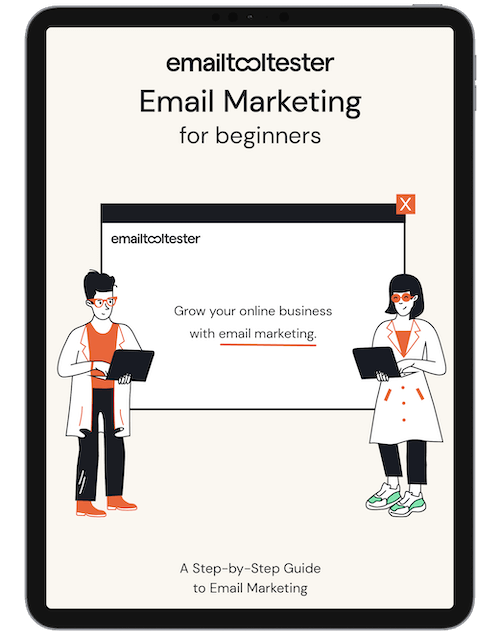
Email Marketing Ebook: Beginner's Guide
Sign up to receive your free copy and avoid common mistakes!
We keep our content up to date
24 Apr 2024 - Video added
04 Mar 2024 - Automations mistake added
02 Dec 2023 - Authentication section added
24 Apr 2023 - General updates
31 Mar 2021 - General update
Our Methodology
This article has been written and researched following our EmailTooltester methodology.
Our Methodology